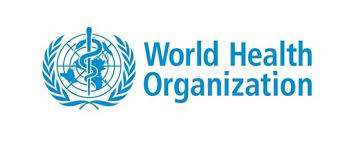Global efforts hold the line against malaria, despite COVID: WHO

United Nations: Despite the continued impact of COVID-19, malaria cases and deaths remained stable throughout last year, according to new data released by the World Health Organization (WHO), a Geneva-based UN agency.
According to this year’s World Malaria Report, countries around the world largely held the line against further setbacks to malaria prevention, testing and treatment services in 2021.
“Following a marked increase in malaria cases and deaths in the first year of the COVID-19 pandemic, malaria-affected countries redoubled their efforts and were able to mitigate the worst impacts of COVID-related disruptions to malaria services”, WHO chief Tedros Adhanom Ghebreyesus said a statement issued in Geneva.
Last year saw an estimated 619,000 malaria deaths globally compared to 625,000 in the first year of the pandemic, and 568,000 in 2019, before the virus struck.
Although cases continued to rise between 2020 and 2021, the rate was slower than that from 2019 to 2020.
The global tally of malaria cases reached 247 million in 2021, compared to 245 million in 2020 and 232 million in 2019.
“We face many challenges, but there are many reasons for hope”, Tedros said.
“By strengthening the response, understanding and mitigating the risks, building resilience and accelerating research, there is every reason to dream of a malaria-free future”.
In 2020, more insecticide-treated bednets (ITNs) – the primary defense in most malaria-endemic countries – were distributed than in any year on record.
And distributions in 2021 were strong overall, similar to pre-pandemic levels.
However, Pakistan, Benin, Eritrea, Indonesia, Nigeria, Solomon Islands, Thailand, Uganda, and Vanuatu distributed less than 60 per cent of their ITNs and Botswana, Central African Republic, Chad, Haiti, India and Sierra Leone did not dispense any.
In 2021, seasonal malaria chemoprevention – a highly effective, community-based intervention – reached nearly 45 million children in 15 African countries, which was a substantial increase from 33.4 million in 2020 and 22.1 million in 2019.
And despite supply chain and logistical challenges during COVID, a record number of rapid diagnostic malaria tests were distributed to health facilities in 2020.
An estimated 242 million artemisinin-based combination therapies – the most effective treatment for P. falciparum malaria – were delivered worldwide in 2021 compared to 239 million in 2019.
Insecticide-treated bednets (ITNs) are the primary vector control tool used in most malaria-endemic countries. The WHO report compares two years of distribution levels.
Despite successes, challenges continued and led the statistical field, particularly in Africa, which shouldered about 95 per cent of cases and 96 per cent of deaths worldwide in 2021.
Disruptions during the pandemic and converging humanitarian crises, health system challenges, restricted funding, rising biological threats and a decline in the effectiveness of core disease-cutting tools, threatened the global response.
“Despite progress, the African region continues to be hardest hit by this deadly disease”, said WHO Regional Director for Africa Matshidiso Moeti, noting that news tools and the funding to deploy them are “urgently needed to help us defeat malaria”.
Malaria funding in 2021 stood at $3.5 billion, an increase from the two previous years but well below the estimated $7.3 billion required globally to stay on track.
At the same time, a decline in the effectiveness of key malaria control tools, most crucially ITNs, is impeding further progress against malaria.
Among the threats are insecticide resistance, insufficient access, and loss of ITNs due to the stresses of daily use outpacing replacement.
Other rising risks involve parasitic mutations affecting rapid diagnostic tests; growing parasite resistance to malaria drugs; and an invasion of an insecticide-resistant mosquito.





